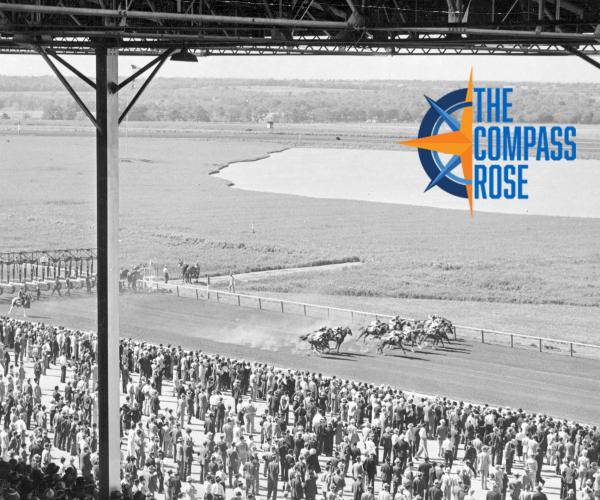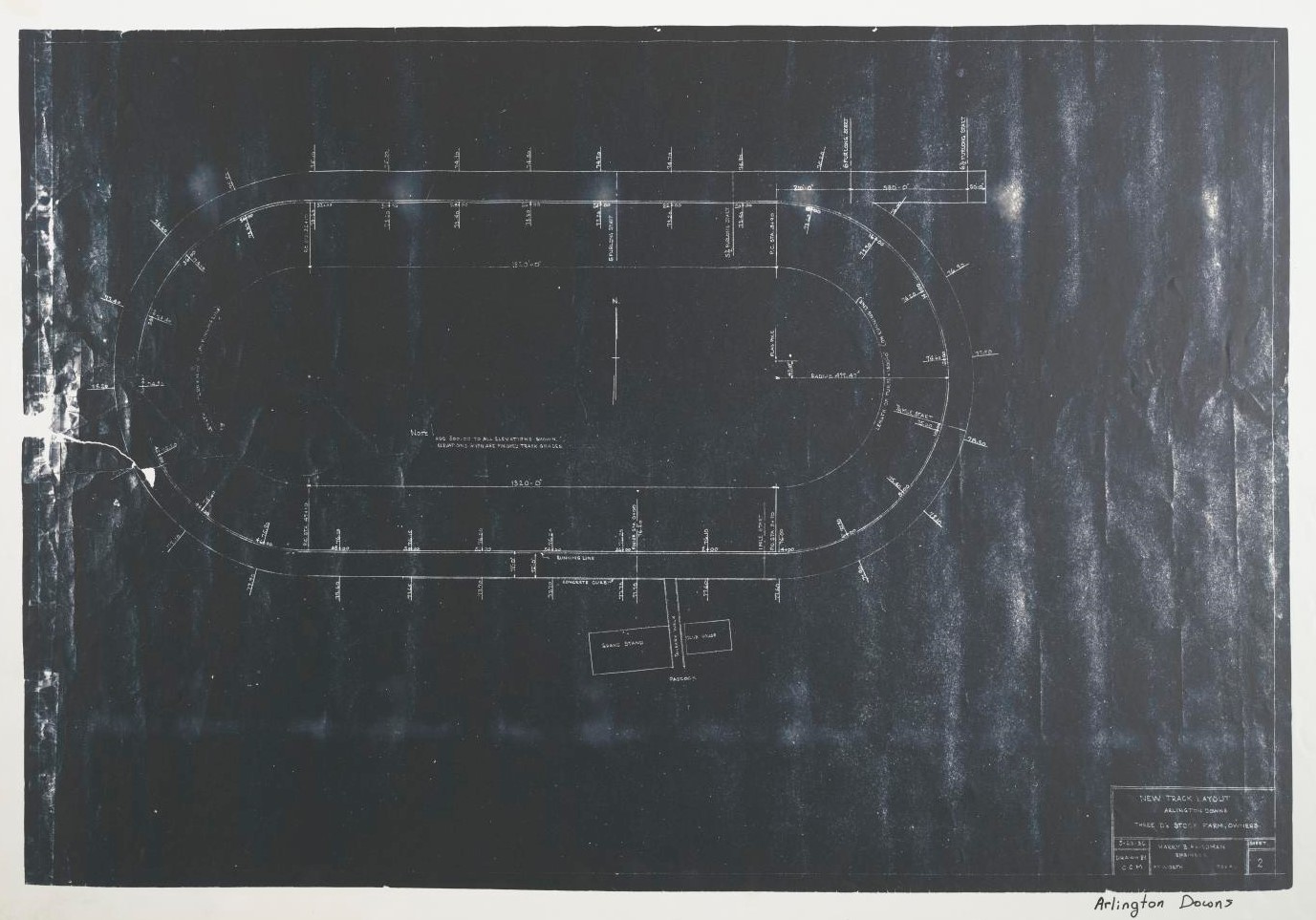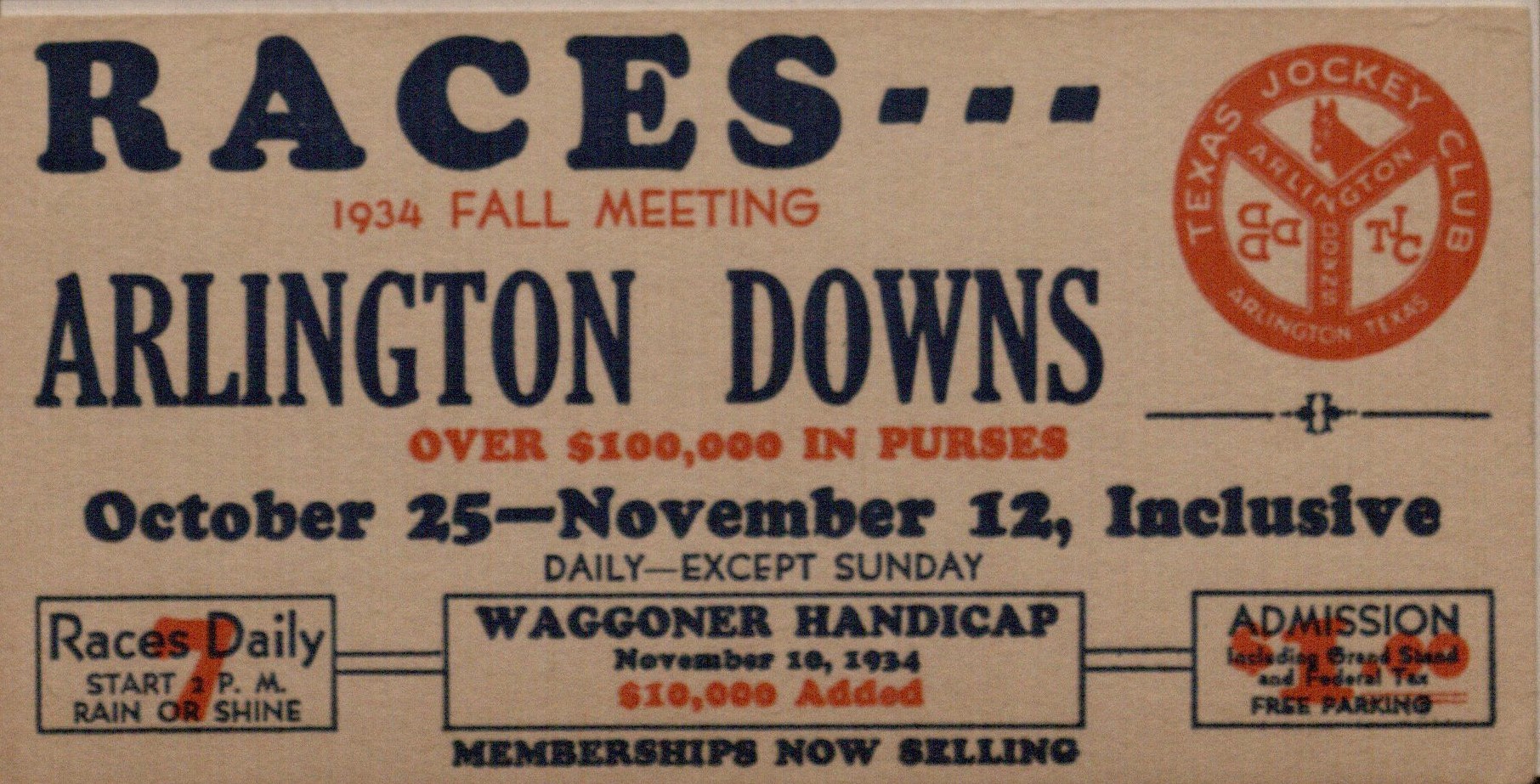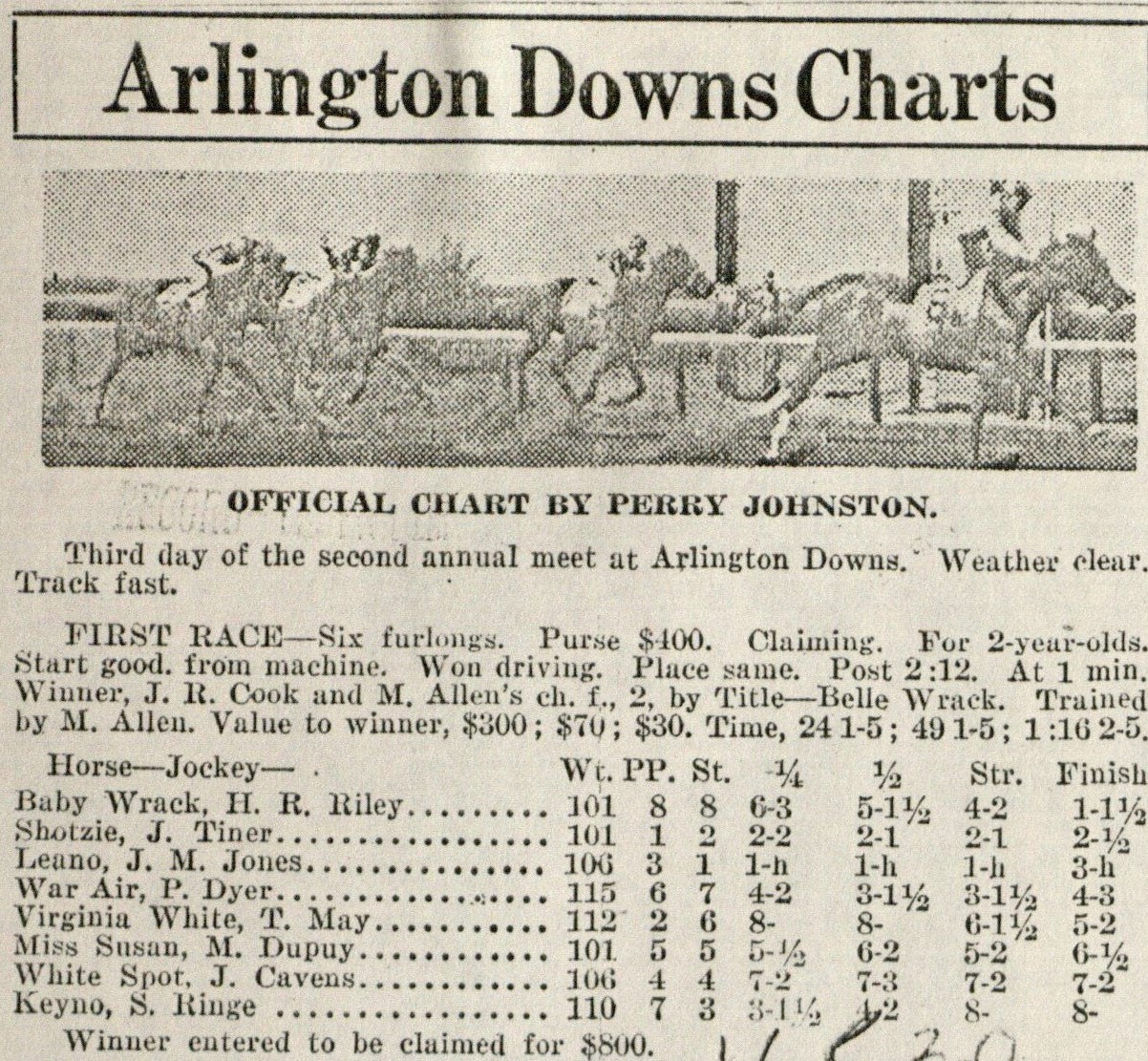
by Stephanie Luke


by Stephanie Luke
The purpose of The Compass Rose is to raise awareness of Special Collections' resources and to foster the use of these resources. The blog series also reports significant new programs, initiatives, and acquisitions of Special Collections.
One of the more interesting chapters in Arlington’s history is the story of the now-defunct Arlington Downs. As Arlington’s only horse racing track, the Downs operated from its construction in the late 1920s to its demolition in 1957. Since it no longer exists, artifacts documenting its history are all the more significant. The University of Texas at Arlington’s Special Collections includes many objects that chronicle the history of the Downs, including maps, newspaper clippings, and other ephemera.

A map from 1933 showing the layout of Arlington Downs.
The Downs was the vision of North Texas native William T. Waggoner. The Waggoner family made its fortune first in the cattle trade then from the oil boom. In the late 1920s, the then-millionaire William T. Waggoner began construction of the Downs, a project costing about $3 million. On November 1, 1929, the Downs was opened and on November 6, 1929, it began its inaugural season, one that witnessed 66 races for purses totaling nearly $67,000. In its first season, over 81,000 people attended over eleven days of racing. At the time pari-mutuel wagering was illegal in Texas, so the only money changing hands was through private transactions. Pari-mutuel betting, a system in which all money wagered is placed into a pool and payoffs are calculated according to odds, and from which the race track receives a share, was one of the primary ways that tracks made money. Since Waggoner could not profit from this kind of gambling, he lost approximately $50,000 on the 1929 season.

A ticket for the 1934 races at the Downs.
During the Depression, Texas had a large fiscal deficit. Legislators began to view pari-mutuel betting as one way of increasing the state’s revenue. In 1933, the state legislature passed an appropriations bill that legalized pari-mutuel betting in Texas and created the Texas Racing Commission. The state would receive two percent of all wagers. The legislature projected that it would receive approximately $500,000 every year from the revenue made from race tracks. The first race with pari-mutuel betting was held in October of 1933.

Charts for the races were published in the Fort Worth Star-Telegram. This is a chart for a 1930 race.

Crowds line the track at the Downs in the 1930s. From the Fort Worth Star-Telegram collection.
Although it was built as a horse racing track, the Downs was also used for other purposes. During World War II, it was employed as a motor pool where vehicles were assembled and tested. In 1945, it began hosting a rodeo. From 1947 to 1950, it was home to AAA Championship car races. Special Collections even has a souvenir program of a Metro-Goldwyn-Mayer sweepstakes for the film To Please a Lady, which starred Clark Gable. On the program, Gable has written “To the race fans in Texas, good luck, Clark Gable.”
Although the Downs was an important institution in Texas horse racing, it was in operation for less than thirty years. In 1937, only four years after legitimizing pari-mutuel betting, Texas passed a bill that banned it. Since tracks could no longer profit from betting, this ban proved to be the death knell for many Texas tracks, including the Downs. In November 1953, some of the Down’s buildings and barns were demolished. Then in July 1957, the grandstands were demolished.
The ban on pari-mutuel betting in Texas would last for fifty years. In 1987, voters passed a referendum that again legalized pari-mutuel betting and once again established the Texas Racing Commission. Of course, this came thirty years too late to save the Downs. Today, the only traces that remain of the Downs are a historical marker, placed in 1978, as well as a fountain and historical marker, placed in 2016.
Comments
Roy Rogers appearance date at Arlington Downs
I have a memory of seeing Roy Rogers at Arlington Downs. When was this?
Arlington downs
The entrance to the downs was where the drive goes into Grainger. Sets where things were vs now. Good then and now photo opportunity
Add new comment